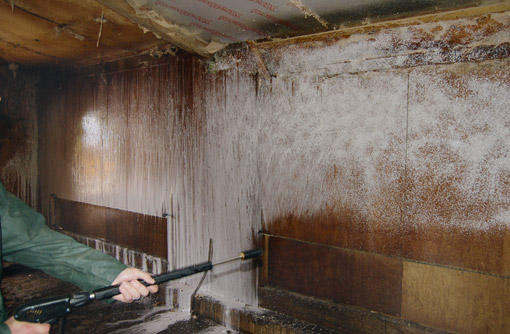Two pronged approach to hygeine pays dividends

Poultry producers who take a more structured and methodical approach to building hygiene will see big benefits, according to Russell Jones, intensive livestock specialist with Diversey.
“Too many producers regard cleaning as a ‘must-do’, uninteresting and mundane chore, something that has to be done and the sooner the better,” says Mr Jones. “But nothing could be further from the truth. Cleaning should be seen as an integral part of a production system that can have a significant impact on performance, costs and profits.”
Mr Jones argues that an efficient, well-planned and implemented cleaning procedure can reduce the disease threat to birds, leading to better performance. It can also save time, reduce dependence on antibiotics and reduce costs.
He explains that an effective routine comprises two distinct and interrelated stages – cleaning and disinfection. Cleaning is essential to remove the environment in which pathogens thrive and to expose them to the subsequent disinfectant. He points out that you cannot disinfect dirt and, unless soiling is removed, the pathogens will be protected from the disinfectant.
“The cleaning phase is crucial, but this is not a case of taking a gung-ho approach with a pressure washer. While you can blast away some soiling, you will not remove the fats and proteins that make up much of the dirt on walls and other surfaces. In addition, the use of high pressure creates an aerosol effect, which can actually spread the pathogens and make problems worse.
“To achieve an effective clean, apply a detergent and then rinse away under low pressure. I am often challenged that using chemical rather than physical power pushes up the cost of cleaning but the big cost of cleaning, is the clinical and sub-clinical disease that results from poor cleaning, and not the cost of the chemical itself.
“Every intensive livestock operation will have a disease issue at some point. Effective cleaning will help prevent the economic loss associated with outbreaks and is considerably cheaper than the cost of treating an outbreak with medicines. Using chemical detergents ensures that soiling is removed before disinfection, resulting in a reduction in bacterial levels prior to restocking, and giving the new birds the best possible start.”
Trial results
Last year, Diversey carried out a trial on 12 production units to evaluate the benefits of cleaning a unit following a standard protocol developed by the company. This covered all aspects of hygiene, including the removal of equipment followed by thorough cleaning using Enduro HD, a thixotrophic detergent gel that sticks to walls and surfaces to ensure good penetration of soiling, including fats and proteins.
The gel was then rinsed off at medium pressure. If necessary, a second application was used to clear particularly stubborn soiling. Following rinsing, the buildings were disinfected using a low-pressure system.
“In units where the protocol was applied, there was a minimum 40% reduction in total bacterial count compared with the results of the farms’ existing cleaning procedures.
“On three units where it was possible to record all inputs and outputs, we found big cost benefits from using the set protocols based on gel detergents. Labour was reduced while the use of low- and medium-pressure systems greatly reduced water usage and the resultant slurry production.
“The trial farmers commented that while the first time following the protocol extended cleaning times, subsequent cleans were much quicker as the build-up of soiling had been removed. Once the unit has been deep cleaned, it was easier to keep it clean,” says Mr Jones.
With rising feed costs and pressure to use less antibiotics, it is vital to maximise bird productivity and minimise the consequences of disease, he adds. Thorough cleaning based on a two-stage routine could have a big impact on future profits and turn cleaning from a chore into a profit driver.
Keep up with the latest poultry news
